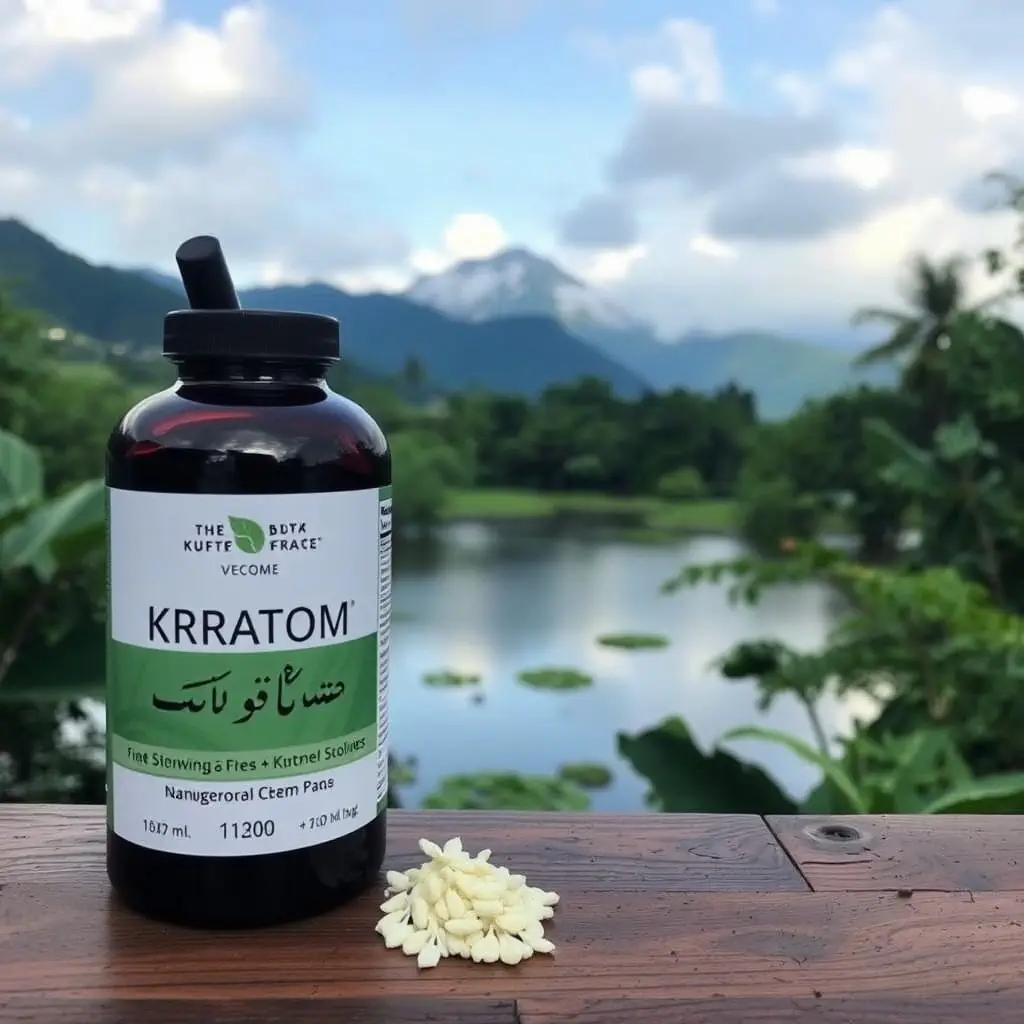Kratom, derived from the Mitragyna speciosa tree, has emerged as a contentious yet potentially beneficial tool for opioid addiction recovery due to its interactions with opioid receptors and compounds like mitragynine and 7-hydroxymitragynine. It may offer analgesic and anti-anxiety effects, but its legal status varies by region, influencing travel considerations. When traveling domestically within the U.S., Kratom is legally transportable under TSA regulations, provided travelers have documentation such as a doctor's note or purchase receipts to substantiate its personal medical use. The scientific community continues to research Kratom's efficacy and safety, which will inform future medical recommendations. For those considering Kratom as part of their addiction recovery plan, it is crucial to consult healthcare providers for professional guidance and to stay updated on local laws regarding its legality. Navigating the legal landscape of Kratom is essential for maintaining compliance and supporting a successful recovery journey, highlighting the need for a balanced approach that considers both the medical implications and practical travel issues.
exploring the therapeutic potential of kratom in addiction treatment and recovery, this article delves into the multifaceted impact of this botanical substance. As we navigate its role within the realm of holistic healing, we’ll also address the nuances of traveling with kratom, given its legal status varies across regions. With a focus on practical integration, the guide presented aims to empower both individuals seeking recovery and healthcare practitioners in making informed decisions about incorporating kratom into treatment plans. Understanding the complexities of its use, this article serves as a comprehensive resource for those interested in the intersection of kratom and addiction recovery.
- Understanding Kratom's Role in Addiction Treatment and Recovery
- The Legalities of Traveling with Kratom: What You Need to Know
- Integrating Kratom into a Holistic Addiction Recovery Plan: A Guide for Individuals and Practitioners
Understanding Kratom's Role in Addiction Treatment and Recovery

Kratom, a plant native to Southeast Asia, has garnered attention in the realm of addiction treatment and recovery due to its potential effects on opioid receptors. Its active compounds, mitragynine and 7-hydroxymitragynine, may offer analgesic and anti-anxiety properties, which can be beneficial for individuals seeking relief from withdrawal symptoms associated with opiate addiction. In this context, understanding Kratom’s role is crucial for healthcare providers when considering it as part of a holistic treatment plan. Proponents argue that Kratom can serve as a safer alternative to prescription opioids and illicit substances, potentially mitigating cravings and easing the transition through its unique pharmacological action. However, the legality and regulatory status of Kratom vary across regions, including questions about traveling with it, as outlined by the Transportation Security Administration (TSA) guidelines. It’s important for individuals considering Kratom as part of their recovery journey to consult with healthcare professionals and stay informed about the legal status in their jurisdiction. Additionally, while Kratom may offer hope to those struggling with addiction, its use should be approached with caution, given the lack of long-term clinical studies. The scientific community continues to explore the efficacy and safety profiles of Kratom, which will inform future guidelines for its use in addiction treatment and recovery. Understanding these nuances is essential for anyone interested in the potential benefits and risks associated with incorporating Kratom into addiction management strategies.
The Legalities of Traveling with Kratom: What You Need to Know

When considering the use of Kratom for addiction treatment and recovery, it’s crucial to be aware of the legalities surrounding its transportation, particularly when traveling. Kratom, derived from the leaves of the Mitragyna speciosa tree, has gained attention both as a potential aid in recovery from substance abuse and as a subject of regulatory scrutiny. As such, the legality of traveling with Kratom varies by jurisdiction, making it imperative for individuals to be informed before they embark on their travels.
The Federal Drug Administration (FDA) has not approved Kratom for any use in the United States, and its status as a controlled substance is in flux. As of this writing, some states and cities have fully banned Kratom, while others regulate it. For those who legitimately use Kratom as part of their recovery regime, understanding the specific laws of your destination is essential. When planning to travel with Kratom, one must verify both federal and local laws, as these can change frequently. Always check the most current regulations from authoritative sources such as the Drug Enforcement Administration (DEA) or state health departments. Additionally, when flying domestically within the U.S., adhering to the Transportation Security Administration (TSA) guidelines is also necessary. The TSA allows travelers to carry Kratom in both checked and carry-on luggage, but it’s advisable to carry documentation supporting its legal use for personal medical reasons, such as a doctor’s note or a legitimate purchase receipt. Being prepared with such documentation can help navigate through security checks smoothly and ensure that your journey with Kratom is legally compliant from takeoff to touchdown at your destination.
Integrating Kratom into a Holistic Addiction Recovery Plan: A Guide for Individuals and Practitioners

Integrating Kratom into a holistic addiction recovery plan can be a nuanced process, requiring careful consideration and professional guidance. Mitragyna speciosa, commonly known as Kratom, has garnered attention in the realm of substance use disorder treatment due to its potential effects on opioid withdrawal symptoms and cravings. For individuals considering Kratom as a component of their recovery journey, it’s crucial to understand how it can be utilized effectively alongside other therapeutic modalities. Practitioners may recommend Kratom as part of a tailored recovery plan, often starting with low doses to monitor effects and adjust as necessary. It’s important for individuals to consult with qualified healthcare providers before incorporating Kratom into their treatment, ensuring that it aligns with any other medications or therapies being used. Additionally, the legal status of traveling with Kratom should be a factor in one’s planning process; while federal regulations allow for the interstate travel of Kratom, some states and countries have restrictions on its possession and use. Therefore, individuals must verify the legality of carrying Kratom within their intended travel destinations to avoid legal complications. This due diligence is a key aspect of a holistic approach, which emphasizes not only the physical aspects of recovery but also the practical considerations that affect daily life and long-term sobriety.
In conclusion, the potential role of Kratom in addiction treatment and recovery warrants careful consideration within a holistic treatment plan. Its unique properties have sparked interest among individuals seeking alternatives to traditional recovery methods. However, it is imperative to navigate the complex legal landscape surrounding its possession and transport, especially when traveling with Kratom. As outlined in this article, understanding the legality of Kratom in different jurisdictions is crucial for those considering its use as part of their recovery journey. Practitioners and individuals alike should approach its integration into a recovery plan with caution, guided by scientific research and professional medical advice. By doing so, they can harness the benefits of Kratom while adhering to legal requirements and ensuring a safe and effective path to recovery.






